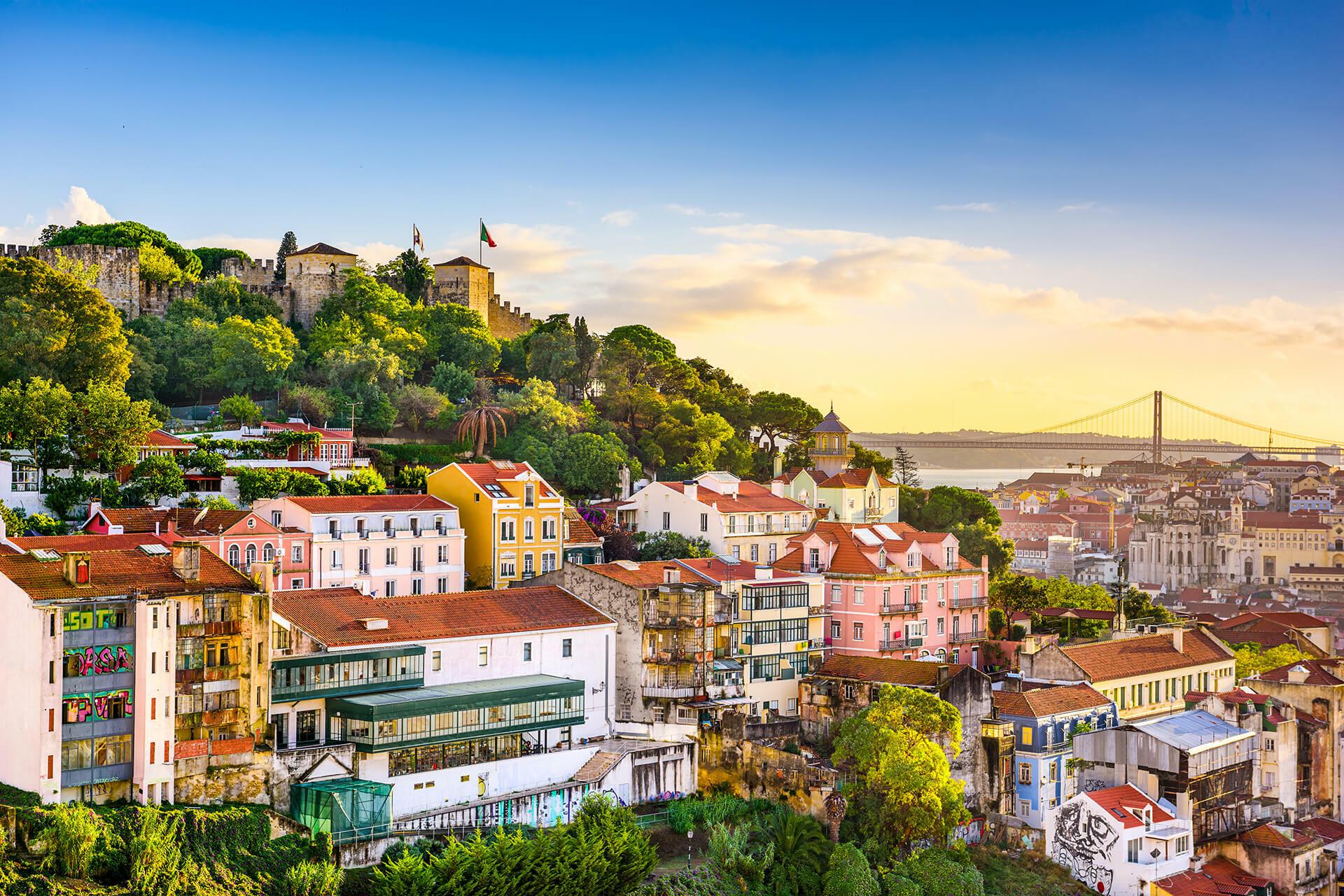Things To Do

Pastéis de Belém
It doesn’t matter if you have a sweet tooth or not: the world-renowned Pastéis de Belém will win you over with their rich flavour and crunchy crust, not to mention the space that has been their home since 1837 – a vintage bakery café with a large esplanade. Located in one of the city’s prime areas, near Jerónimos Monastery, a visit to Pastéis de Belém is for sure one of the best things to do in Lisbon.
Miradouro das Portas do Sol
Just a few steps from Miradouro de Santa Luzia, a balcony opens onto the river, offering truly spectacular views over Alfama. Faced by soft-toned buildings and the Decorative Arts Museum, this is a popular stop for photographers, with its stunning view from São Vicente de Fora Monastery to the waterfront.
Rua Augusta
Lisbon's main pedestrian street Augusta street. This is a lively pedestrian street with mosaic pavements, outdoor cafés, international shops, and the occasional street artist and peddler.
Museu de Lisboa
There’s a long-term exhibition at Pimenta Palace - a summer palace dating from the first half of the 18th century and now the headquarters of the Museum of Lisbon - that provides a chronological overview of the development of the city from prehistoric times to the late 20th century, having a large-scale model of the pre-earthquake Lisbon.
Alfama
Alfama must be at the top of your list of places to visit in Lisbon. This neighbourhood is the personification of Lisbon's spirit and culture. Here, you will be captivated by the mediaeval atmosphere of the cobbled narrow streets, the floating sounds of Fado and Portuguese folk music, the vibrant buildings colours, the beautiful artworks and ancient architecture.
Portuguese Tiles
Azulejo (tile), is an artistic expression that differentiates Portuguese culture. As you wander around Lisbon, you will find many tile panels (and tile-inspired souvenirs) in the most varied places - buildings, fountains, courtyards, and restaurants –, some are centuries old and some are modern and fun. Hence, National Tiles Museum is one of the most important national Portuguese museums of the singularity of its collections, which will allow you a journey through the history of tiles and to some extent, of the country, from the 15th century till the present day.
Palácio Nacional da Pena
This UNESCO World Heritage Site is one of the finest examples of 19th century Romanticism anywhere in the world. Pena Park (Parque da Pena), which surrounds the palace, provides over 200 hectares of heavily forested grounds to enjoy. There are a wonderful mix of over 500 different species of trees and shrubs from around the world.
Quinta da Regaleira
António Augusto Carvalho Monteiro was born in 1848 to wealthy Portuguese emigrants in Brazil and augmented his fortune in the coffee and precious stone businesses. That wealth was funnelled into the bewildering Quinta da Regaleira, which is crammed with small monuments reflecting his fascination with the Masons, Knights Templar and Divination. His Romantic palace is out of a dream and bursts with Manueline-style masonry, but it’s in the palace park where Monteiro’s eccentric personality comes through: Underground there’s a system of tunnels and grottoes, all intended to confuse and delight. Above are ornate gazebos, benches with sculptures and two “initiation wells”, deep shafts lined with spiral stairways leading down to sanctums for tarot ceremonies.
Castelo dos Mouros
Castle of the Moors,Hoisted on one of Sintra’s northernmost peaks are the ruins of a mighty castle, built by the Moors and enlarged after the Reconquista.
Casino Estoril
The Casino in Estoril is reputed to be the largest in Europe offering over 1,000 slot machines. During World War II Estoril was something of a hotspot for exiled royalty and deposed despots, as well as spies from all sides. One such spy was Ian Fleming, the James Bond author, and it is said that his experiences here were the inspiration for his first Bond book - Casino Royale. Interestingly enough much of the later Bond film, On Her Majesty’s Secret Service, was filmed in the Estoril / Cascais area.